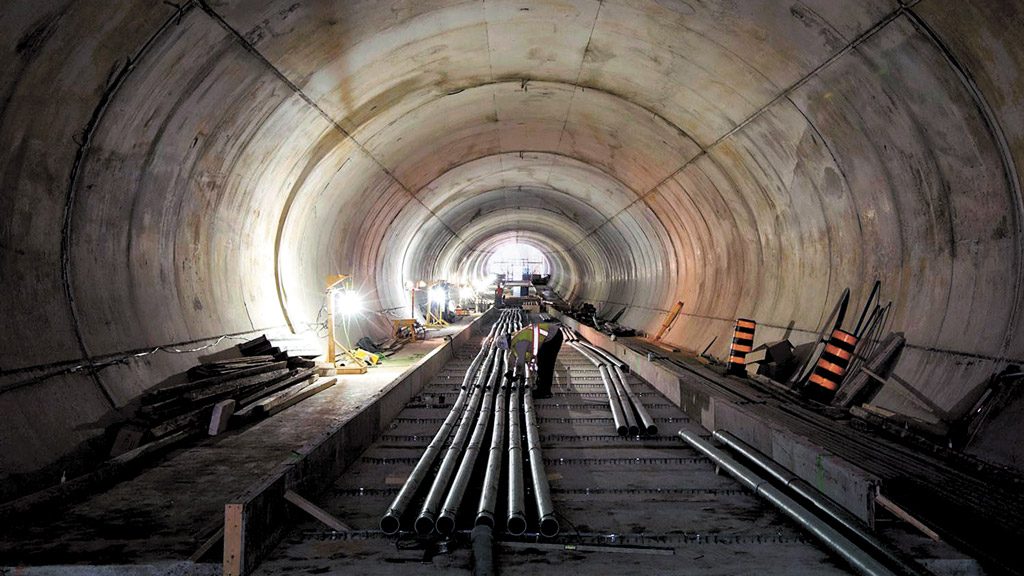Time and again, engineers and builders have demonstrated the value of tunnelling, transforming otherwise unusable underground real estate into valuable infrastructure.
For the Tunnelling Association of Canada (TAC), communicating that value to the public and other stakeholders has become one of its primary goals.
TAC brings together about 400 members from across the globe to promote and advance Canadian tunnelling and underground excavation technologies. It also represents the interests of the tunnelling and underground excavation community in matters of technical and public concern. Members include engineers, contractors, manufacturers and academics.
TAC is also the country’s representative body of the International Tunnelling Association, connecting Canadian tunnelling practitioners to a worldwide network of experts.
“The value of tunnels is sometimes lost in the discourse as stakeholders discuss these vast infrastructure projects,” says Erik Eberhardt, president of TAC and director of Geological Engineering at the Department of Earth, Ocean and Atmospheric Sciences at the University of British Columbia. “There’s public discussion about the costs and the possibility that tunnelling might be disruptive but not enough emphasis on the value of choosing to use underground space for infrastructure.”
Underground real estate is free of the constraints of surface land prices, he says.
Tunnels also represent near-permanent infrastructure. Canada’s first railway tunnel was built in Brockville, Ont. in 1860 and is still open for pedestrian use. Some of the first deep-level subway tunnels used in London, England’s Underground system, opened well over a century ago, are still in use today.
Residents of Vancouver in the year 2050 may not recall that the Vancouver-Broadway corridor along the 99 B-line was North America’s busiest bus route, transporting 100,000 passengers daily. That’s because a proposed subway line will already have been making the area more livable for decades.
“The tunnelling project for that route could cost billions,” says Eberhardt. “But in the present, some people will only balance that cost against revenue from operating the subway. They don’t look at the value of relieving surface congestion and improving the livability of the community in a way that a dedicated at-grade rail line could never do. Every time you can take congestion from the surface and move it underground, you can re-envision what your city can be in terms of green space or other uses.”
However, the growth of the tunnelling industry isn’t simply dependent on subway and transportation tunnels. Canada’s hydro-electric projects typically involve tunnelling. Sewer and water projects are also driving business, from larger municipalities to smaller centres.
Vancouver, for example, is building tunnels to house its water infrastructure to protect it from earthquakes.
Tunnel boring technology also continues to mature, with larger tunnel boring machines (TBMs) expanding the limits of tunnel diameters. At the same time, sophisticated micro-TBMs are making the technology available for smaller-diameter projects, such as sewer and water pipe tunnels, where it was previously uneconomical to use them.
TAC continues to work with universities to develop and attract new recruits to work on these projects.
“Universities across Canada are putting out a lot of top students in terms of civil, geological and mechanical engineers,” Eberhardt says. “But Canada has a strong resource economy, so tunnelling companies are competing with mining companies and oil and gas companies who are recruiting people with similar skill sets.
“When push comes to shove, mining companies probably have a little deeper pockets than companies who are working on tunnelling contracts largely for government clients. And the consortiums who are bidding on these same government projects are all competing by cutting their prices to the bare bones.”
Canadian tunnelling expertise continues to be recognized globally, because of the diversity of domestic projects and the challenging conditions under which those projects are completed.
“Canadian geology and geography are extreme but we work successfully in ground conditions ranging from glacial soil to solid rock,” says Eberhardt. “And we have a lot of expertise working in remote locations and extreme weather. It takes a lot of planning and expertise to work effectively under those conditions. TAC continues to promote that expertise globally as a valuable Canadian export.”











Recent Comments